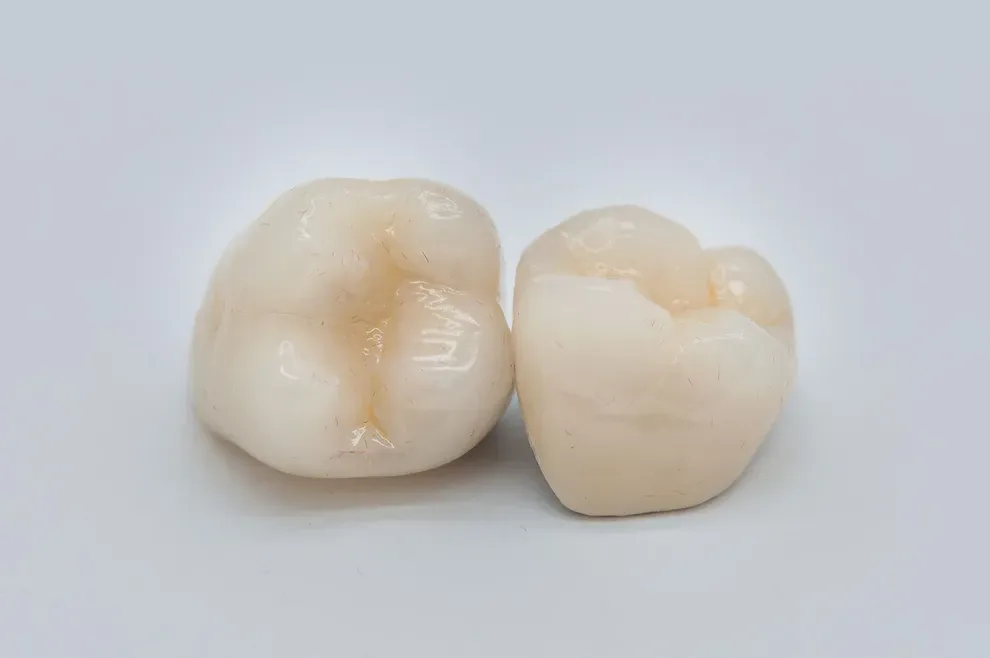Temporary Crowns: When Are They Used?

Table of Contents
- What Are Temporary Crowns
- Why a Temporary Crown
- Placement of a Temporary Crown
- Pros & Cons of a Temporary Crown
- References
A dental crown is a type of cap that is placed on top of your tooth to maintain its structure and restore its size and strength. A temporary crown is often used as a placeholder after a root canal or filling, when your tooth has been filed down.
It often takes some time to get a permanent crown made and delivered from a dental laboratory, and a temporary crown can protect your tooth in the meantime. Temporary crowns are generally placed at the time your tooth is filed down and meant to be a short-term solution.
Temporary crowns are not as strong or sturdy as a permanent crown. There may be a gap between your tooth and the temporary crown. You will need to be careful with a temporary crown and get your permanent crown placed as soon as your dentist says it’s ready.
What Are Temporary Crowns?
Tooth decay is common and can cause holes to form in your teeth as the enamel is destroyed, forming a cavity. Cavities will need to be filled by a dental professional after the decay is cleaned out. If the decay has progressed, you may also need a root canal.
Tooth decay can lead to too much of your tooth being compromised for a traditional filling. A crown will then need to be placed to strengthen your tooth and restore its shape and structure.
Crowns are custom-made after an impression of your tooth is taken and sent off to a lab. While you wait for your permanent crown to come back from the lab, your dentist will often place a temporary crown to protect your tooth.
A temporary crown is a prosthetic placed with light cement that can be easily removed when it is time to place your permanent crown. A temporary crown can be left on long enough to allow your tooth pain or additional symptoms to decrease as well, giving your dentist time to assess your condition and make sure treatment is appropriate.
While your temporary crown is in try to avoid chewing in the area, even if you reattached the temporary because chewing adds pressure to the temporary crown, which can lead to loosening or damaging the temporary.
Why a Temporary Crown?
A temporary crown is often placed after a root canal and before your permanent crown is put in place. There are several important reasons to use a temporary crown, including:
To act as a placeholder in your mouth, so your teeth do not move to close the gap left by filing down the tooth.
As protection for your gum tissue and the remaining part of your tooth after it has been filed down.
To aid you in eating and drinking more normally.
To improve your appearance when you smile while you wait for the permanent crown.
A temporary crown is not as strong as your permanent crown, and it will need to be handled with care. Temporary crowns are not meant to be left on your tooth long-term. Weak materials and cement are used to hold them in place, so they can be easily removed when needed.
Placement of a Temporary Crown
The procedure for placing a temporary crown will often look like this:
Take an x-ray of the problem tooth and/or area.
Treat remaining tooth decay. If you need a root canal, this is often done in another visit.
File the tooth into a mountain-type shape to make room for the crown.
Take an impression of the tooth and those surrounding it.
Use temporary cement to place the temporary crown.
You will need to take special care of your temporary crown. Do not eat or drink for at least 30 minutes after the temporary crown is placed. Use care and caution when brushing and flossing around the crown to avoid dislodging it.
Avoid hard, sticky, chewy, or sugary foods and drinks that can potentially become lodged in your tooth. They can damage your crown or seep in underneath it, causing further issues.
Pros & Cons of a Temporary Crown
A temporary crown is often needed to hold your tooth position and protect what is left of your natural tooth. It is meant to be temporary, so it is less sturdy and strong than the rest of your teeth and permanent crowns.
You may experience pain and tooth sensitivity with a temporary crown. It can help to avoid overly hot or cold food and drinks.
Temporary crowns can fall off very easily. You may need to return to the dentist more than once to have it cemented back on.
There is generally a gap between your newly filed down tooth and your temporary crown, which can leave room for food and bacteria to get underneath. You will need to carefully care for your new temporary crown. Keep your mouth and teeth clean by brushing carefully and using a fluoride mouthwash.
